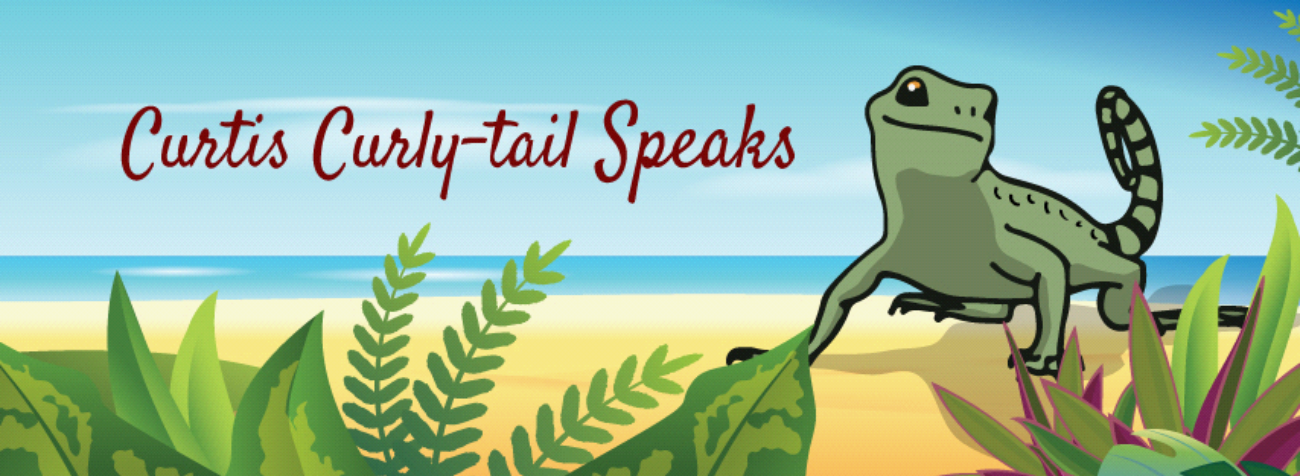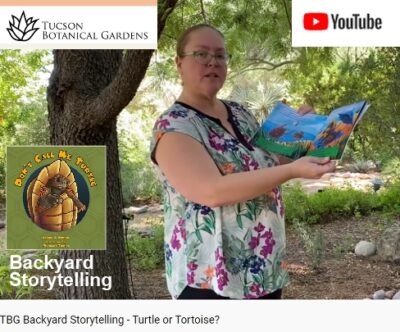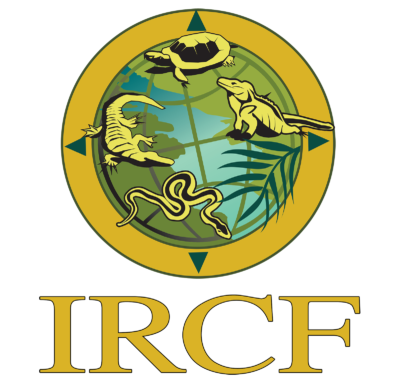The Importance of Native Trees
April 29th was Arbor Day. This day is to remind us of the importance of trees. When I bought my first house in Michigan, I took advantage of the National Arbor Day Foundation’s offers of free trees appropriate for the climate. Planting native trees is important for many reasons, a few of which you’ll learn about below!
Planting Native
I admit I was a little dismayed when I received little sticks with roots from the National Arbor Day Foundation. However, I believed in the growth ability of trees and planted them. I chose a place in my front yard for a red maple. Within a few years, it grew to a magnificent 30-foot tree. I checked with the aerial photo of my old home recently and, yes, the red maple is still there! I guess I shouldn’t have been too surprised. After all, my yard had rich soil and the area had plenty of precipitation – everything a tree would need to thrive.
This brings me to my amazement at how trees grow and thrive in the Sonoran Desert. After all, there is very little precipitation (maybe 14 inches a year) and poor soil. Plants in the desert are forced to grow in alkaline clay soil. Their roots must break through the hard layer called caliche. Caliche is a natural kind of cement, where calcium carbonate (which I wrote about in a previous blog) binds the soil together. Caliche prevents water from draining which causes salts to accumulate. Roots are not able to get through the hard layer, which affects where they grow. Deep roots are not possible, so roots are limited to near the surface. If you want to plant a tree in your yard, you need to help them by breaking the caliche.
We’ve all heard about the importance of trees. They help provide the oxygen we breathe. They also act to improve air quality, conserve water (very important in a desert), preserve soil (also important when the monsoons produce flash floods), and support wildlife. In the Tucson parking lots, drivers park as close to any tree for a bit of shade, no matter how spindly it is.
The Amazing Palo Verde
A common tree in the Sonoran Desert is the palo verde, Parkinsonia species. Palo verde means green stick in Spanish due to the green bark which enables photosynthesizing. Most trees use their leaves for photosynthesis. To reduce water loss, many desert trees have small leaves. Being able to photosynthesize in one’s trunk and branches is a definite advantage.
Trees are known to lower air temperatures and affect wind speeds. As a matter of fact, trees can create microhabitats, which is a very important role in the Sonoran Desert. These microhabitats are critical for other iconic desert plants, the cacti, most notably the saguaro cactus (Carnegiea gigantea). Trees, able to grow in the harsh environment, create a cooler, shadier place for tender young plants to grow.
Palo verde grows as trees, as shown above, or as large bushes. See the nice shade created by the palo verde bush below.
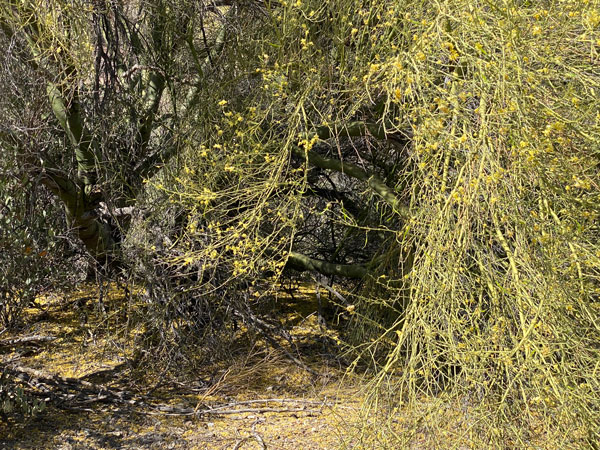
This is a palo verde serving as a nursery tree for a saguaro. The cactus has no trouble growing in and through the tree.

But what amazes me, is that the desert trees choose to bloom during the driest part of the year, late spring. The winter rains are over, and the temperatures rise, but the humidity is still low until it’s time for the summer monsoons. Yet, the palo verde and other trees choose this difficult time to bloom vigorously. The scenery is filled with color.
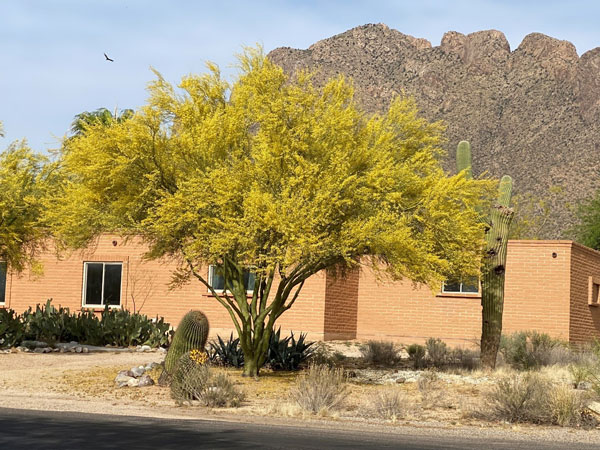
As the palo verde flowers fall, a carpet of yellow covers the ground. One unfortunate aspect of these flowers is that some of us are allergic to pollen. Yet, it’s worth the temporary suffering to see the desert in a golden glow.
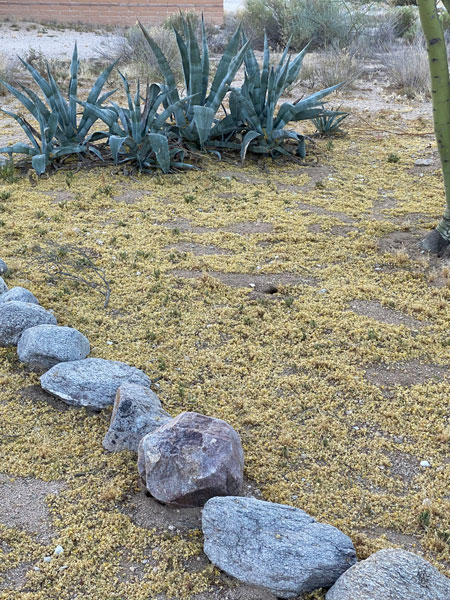
Along with creating the microenvironment for other plants, desert trees provide food and habitat for native animals as well. Along with the beauty of the flowers, I do enjoy the decorative birds in my palo verde.
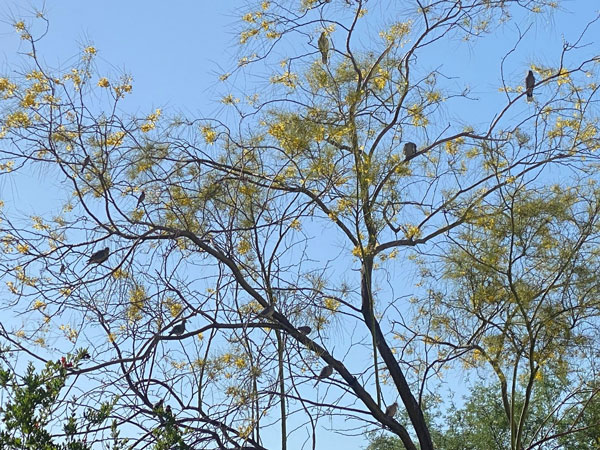
Desert trees take life slow, perhaps a reflection of the difficult lives they live. A palo verde can live 100 years and, perhaps, up to 400 years! After I have passed on, it’s nice to know future generations will enjoy these green and yellow trees. Interested in learning more about Sonoran Desert natives? Check out my educational workbooks featuring rattlesnakes, tortoises, and more!
To learn about our latest science-based children’s books and workbooks, to read our latest blog posts about reptiles, birds, cats, and gardening, in a variety of locations, and about how the books come to be, what inspires an author to write, and many more interesting aspects of the publishing business, fill in the box below and we will add you to our email list.
Thank you!
